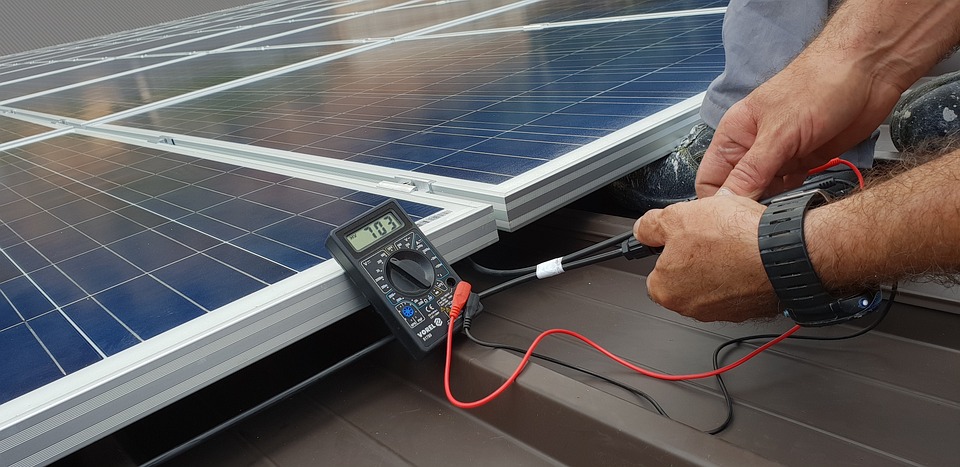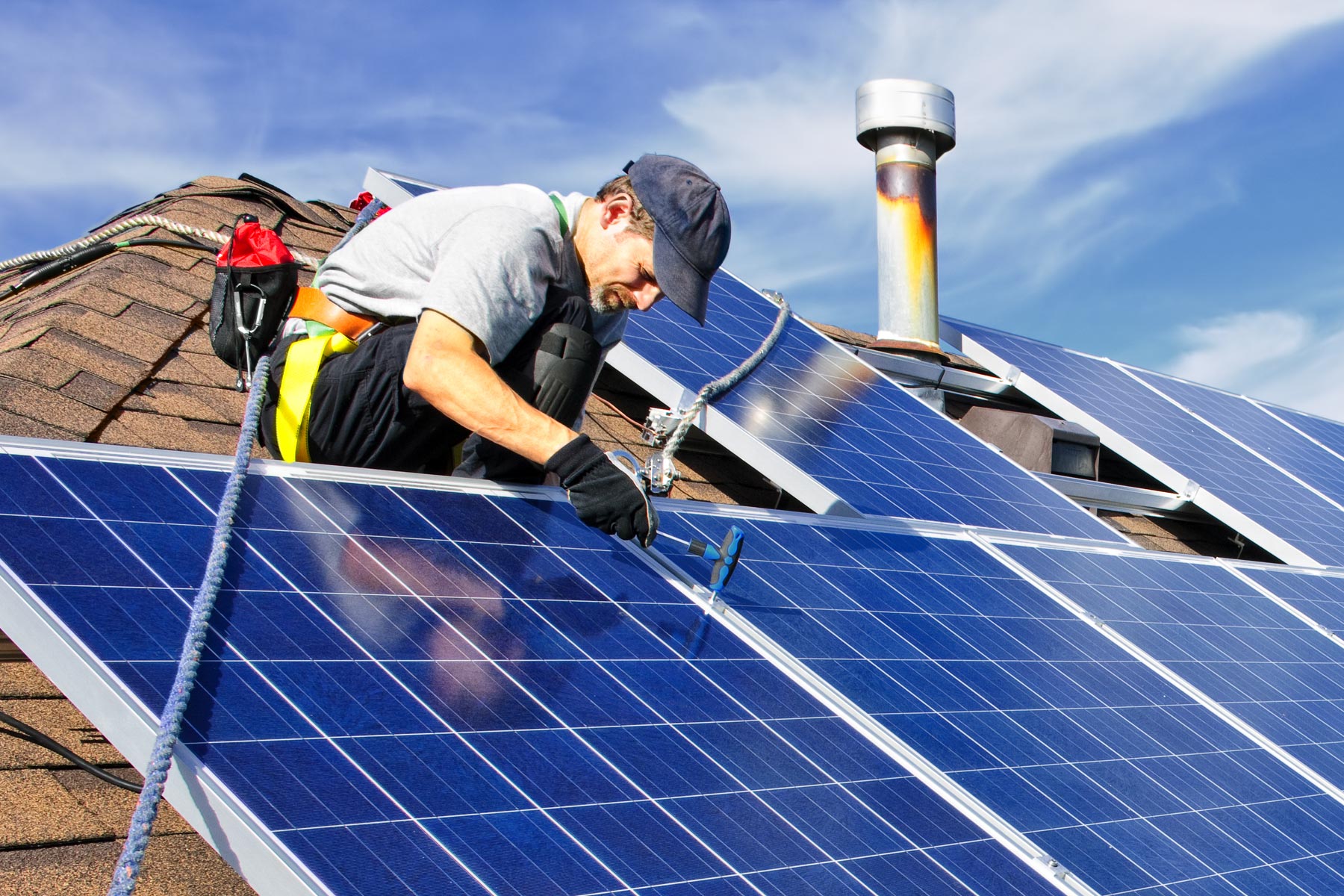Solar Energy For Businesses: Large-Scale Photovoltaic Systems Can Significantly Decrease Energy Expenses For Organizations
Unlocking the Advantages of Commercial Solar Panels

Have you ever wondered why more services are turning towards industrial solar panels in their energy method? It's not practically going green-- though that's a compelling reason-- it has to do with utilizing a plentiful, free resource that can drastically minimize operational expenses with time. Imagine a factory roofing changed into a quiet, effective energy generator, calmly slicing regular monthly electricity bills while reducing carbon footprints.
Financial Advantages That Speak Volumes
Business solar panels offer a suite of monetary benefits that can reshape a company's bottom line. Consider these bottom lines:
- Decreased Energy Costs: Solar energy can balance out a significant portion of electricity use, resulting in immediate cost savings.
- Return on Financial Investment (ROI): Though preliminary setup can be considerable, the long-term cost savings frequently surpass the in advance costs.
- Energy Rate Stability: Unlike fossil fuels, solar energy isn't subject to market volatility.
- Increased Residential Or Commercial Property Worth: Structures geared up with planetary systems tend to assess higher in worth.
Environmental Impact: More Than Simply a Buzzword
Consider the last time you discovered a field of photovoltaic panels shining under the sun. It's a sight that signifies hope and obligation. Commercial solar panels significantly lower greenhouse gas emissions, helping services align with sustainability objectives without compromising efficiency.
- Lower carbon footprint
- Reduction in reliance on nonrenewable energy
- Support for corporate social obligation efforts
Functional Advantages That Typically Go Undetected
Beyond the apparent financial and ecological perks, commercial solar panels offer functional advantages that lots of Solar Panel Packages neglect. For example, solar installations can offer energy independence, decreasing vulnerability to power interruptions or energy rate walkings. This strength can be a game-changer during peak demand periods or emergencies.
| Benefit | Description |
|---|---|
| Energy Reliability | Ensures a consistent power supply, minimizing downtime. |
| Low Upkeep | Business solar technology needs very little upkeep. |
| Scalability | Systems can broaden as energy requires grow. |
What's the Catch?

Is there a downside? Some may argue the in advance financial investment or area requirements. If you peer beyond the surface, the long-term advantages frequently eclipse these challenges. Think about it: in a world where energy costs unexpectedly fluctuate, wouldn't you want a stable, sustainable source? The response may be clearer than you believe.
Eventually, industrial solar panels do not simply power structures-- they empower organizations to visualize a future where revenue and world exist side-by-side harmoniously. Could this be the energy transformation your service has been awaiting?
Setup Process and Considerations
Imagine standing atop an industrial roof, the sun blazing overhead, panels shining like fragments of a futuristic mosaic. The installation process for business solar panels is far from a basic roof decor-- it's a complicated symphony of engineering, precision, and insight. One error in the installing angle or electrical wiring design can ripple into months of lost effectiveness and pricey repairs.
Secret Steps in Setup
- Website Evaluation: Before the very first panel touches metal, a thorough evaluation of the site's sun direct exposure, roofing system structure, and shading patterns is vital. Does the roofing system slope favor ideal solar gain? Are neighboring trees or structures casting unforeseeable shadows?
- System Style: Tailoring the panel design to business's energy needs and roofing restraints involves advanced modeling tools. This is where theoretical energy output meets physical reality.
- Structural Reinforcement: Commercial roofs typically require reinforcement to bear the weight and wind loads of the solar range. Not accounting for this can result in sagging or disastrous failure throughout storms.
- Electrical Combination: Connecting the panels to the building's electrical system needs expert knowledge of load balancing and inverter positioning to decrease energy loss.
- Final Inspection and Screening: The last step guarantees whatever operates flawlessly, but it's likewise when hidden flaws often appear.
Vital Factors To Consider for Success
- Roofing Condition and Durability: Are you setting up on a roof that will last another 20 years? It's a good idea to replace or fix the roofing system ahead of time to prevent getting rid of panels prematurely.
- Weight Distribution: Not all roofings are created equivalent. Comprehending the load-bearing capability prevents structural damage and keeps security.
- Orientation and Tilt Optimization: Even a small deviation from the ideal panel angle can slash output by as much as 15%. Accuracy here pays dividends.
- Weather Patterns: How will local environment extremes-- hail, snow, or high winds-- impact the resilience and efficiency of your system?
- Circuitry Pathways: Planning wiring routes to reduce voltage drop and prevent electro-magnetic interference is an often ignored yet important factor.
Professional Tips for a Perfect Installation
| Idea | Why It Matters |
|---|---|
| Perform a shadow analysis at different times of day and year | Ensures maximum sunshine capture and prevents unexpected dips in energy production |
| Use micro-inverters instead of a single main inverter | Increases system resilience; one panel's underperformance won't drag down the entire range |
| Engage a structural engineer early while doing so | Prevents expensive surprises associated with roofing system integrity and compliance |
| Label all electrical components plainly | Accelerate troubleshooting and future upgrades |
Have you ever wondered why some solar setups appear to defy the components for decades, while others fail after a couple of seasons? It's the unseen attention to detail-- like verifying torque settings on installing hardware or calibrating inverter settings to regional grid conditions-- that separates the exceptional from the mediocre. Commercial photovoltaic panel setup is less about slapping panels on a roof and more about crafting a resilient, effective energy environment customized to the distinct pulse of each organization.
Exploring the Varieties of Commercial Solar Panels
Think of strolling into a huge field of solar panels, each shining under the sun with a distinct purpose. Industrial photovoltaic panels aren't a one-size-fits-all service. They are available in numerous flavors, each tailored to various energy needs and installation environments. Ever wondered why some panels seem bulkier while others appear sleek and slim? Let's peel back the layers.
Monocrystalline Solar Panels: The Elegance of Efficiency
These panels, crafted from a single crystal of silicon, resemble a dark, practically black canvas extended throughout rooftops and solar farms. Their consistent appearance isn't just aesthetic-- it translates to higher effectiveness rates, often hovering around 20% or more. This means they transform a bigger portion of sunlight into electrical energy, making them ideal for spaces where every square inch matters.
Nevertheless, their production is energy-intensive, akin to molding a diamond from rough stone. For services with minimal roofing system space but high energy consumption, monocrystalline panels typically end up being the go-to choice.
Polycrystalline Solar Panels: The Mosaic of Cost
Photo a mosaic, dynamic and speckled with numerous tones of blue. Polycrystalline panels are made from melted silicon pieces put into molds, resulting in a somewhat rough, less consistent appearance. They normally use slightly lower performance-- around 15-17%-- however their production procedure is less inefficient and more cost-effective.
When spending plan restraints loom large, and space is less of a premium, these panels strike a fine balance in between in advance financial investment and efficiency.
Thin-Film Solar Panels: The Lightweight Competitors
Ever seen solar panels that resemble flexible sheets instead of rigid panels? Thin-film technology deposits photovoltaic product onto substrates like glass or metal, creating light-weight, bendable panels. While their effectiveness lags behind crystalline types-- frequently listed below 15%-- they excel in special applications where traditional panels fail.
Envision roofs with uncommon shapes or large facade setups where weight and flexibility determine options. Thin-film panels shine here, although they require more area and careful factor to consider of long-term output degradation.
Key Factors To Consider for Industrial Setups
- Energy output per square foot: Vital for optimizing power in constrained areas.
- Resilience: Panels withstand weather condition extremes; material composition affects life expectancy.
- Temperature coefficient: Important in hot climates as some panels lose performance when temperature levels increase.
- Installation complexity: Thin-film panels can decrease structural load but might make complex electrical wiring.
Insider Tips for Choosing the Right Panel Type
- Assess your roofing system's load-bearing capability before choosing much heavier monocrystalline arrays.
- Consider the angle and orientation of your installation site; some panels carry out much better under diffuse light.
- Look beyond effectiveness numbers-- consider destruction rates and warranty terms.
- Take part in early dialogue with engineers about potential shading concerns that can dramatically minimize output.
In the quest for the best industrial solar panel, the devil is truly in the details. Are you ready to harness the sun's power with accuracy instead of uncertainty?
Environmental Impact and Energy Savings of Commercial Solar Panels
Picture a vast roof, once a barren stretch of asphalt, now gleaming with rows of business photovoltaic panels. This change isn't just visual; it's a powerful statement against the ruthless intake of fossil fuels. Commercial solar arrays can slash carbon footprints in ways that might surprise even seasoned energy experts. However what does that really indicate for the environment and your bottom line?
Carbon Footprint Reduction: Beyond the Numbers
Every kilowatt-hour created by photovoltaic panels represents a tiny victory versus greenhouse gas emissions. On a larger scale, a commercial facility equipped with solar can reduce CO2 emissions by loads every year-- equivalent to planting hundreds of trees. The true effect extends beyond mere statistics. Consider the causal sequence: fewer emissions indicate cleaner air, healthier communities, and a more stable environment.
Energy Efficiency: The Silent Game-Changer
Performance in solar technology has actually jumped forward, but even the most sophisticated panels deal with ecological hurdles during production. What often escapes attention is how savvy system design can mitigate these issues, making the most of energy output while reducing ecological disturbance. Orienting panels with accuracy and including energy storage options can change variable sunshine into consistent power, cutting dependence on grid electrical energy.
Expert Tips for Maximizing Energy Savings
- Enhance tilt and orientation: Even a couple of degrees can affect efficiency by approximately 15%.
- Incorporate clever inverters: They boost grid compatibility and reduce energy losses.
- Utilize energy management systems: Real-time tracking identifies ineffectiveness before they escalate.
- Scale slowly: Phased installations permit adaptation to developing energy needs without wasting resources.
Environmental Trade-offs and Long-Term Vision
Photovoltaic panel don't spring from thin air; their production involves rare minerals and energy-intensive processes. This reality pushes stakeholders to believe beyond immediate gains. What if end-of-life recycling for panels were streamlined industry-wide? The capacity for circular economy concepts to reshape the solar sector is tremendous, promising even greater environmental dividends in the future.
Quantifying Impact: A Quick Recommendation Table
| Metric | Typical Annual Business Solar Output | Equivalent Environmental Advantage |
|---|---|---|
| Energy Produced (kWh) | 500,000 | Powering ~ 45 average homes for a year |
| CO2 Emissions Prevented (tons) | 350 | Planting ~ 300 mature trees |
| Energy Expense Savings | ~$ 40,000 | Reinvestment into sustainable operations |
So, when weighing the environmental impact of industrial solar panels, ask yourself: are you prepared to envision energy not simply as an energy, but as a driver for eco-friendly renewal? The response shapes how businesses harness the sun's power today-- and tomorrow.